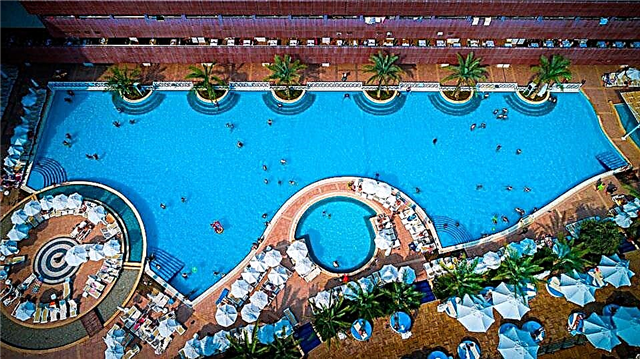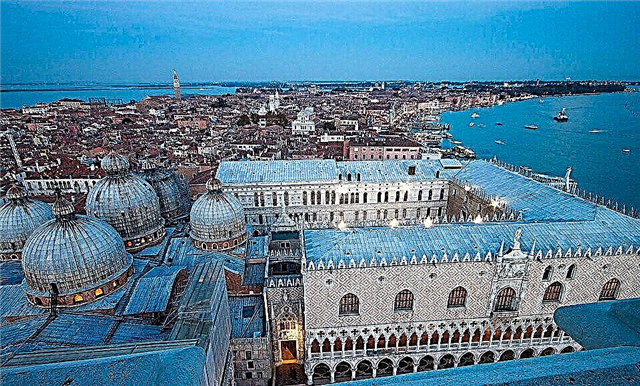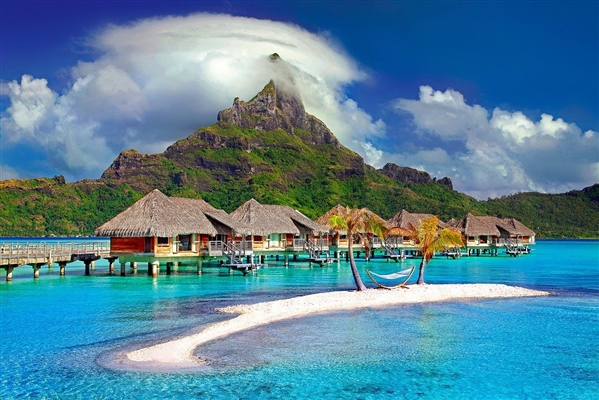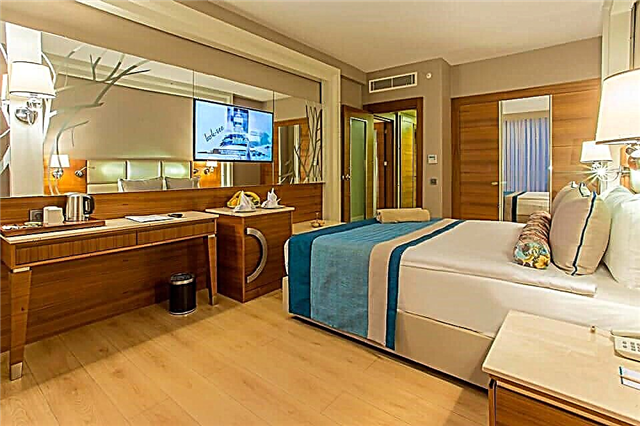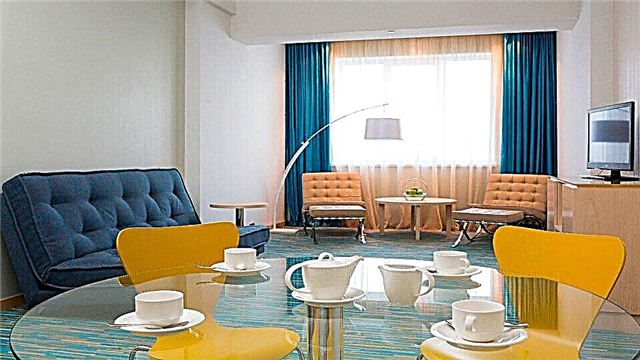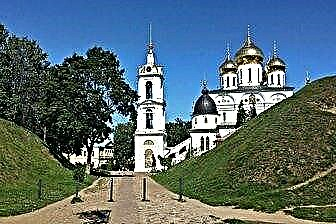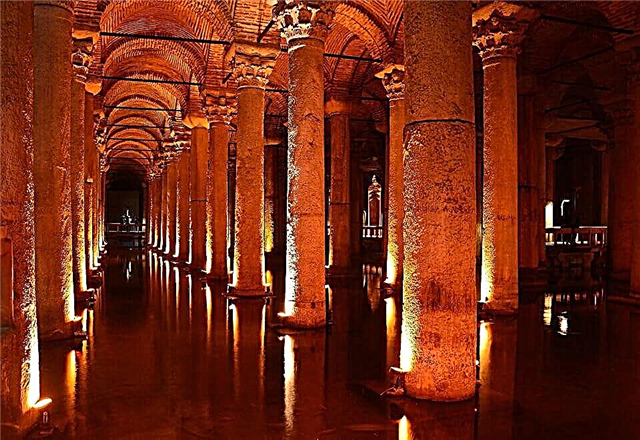A huge metropolis, embodying hoary antiquity and youthful modernity, handsome Istanbul connects East and West. The largest city in Turkey is a tourist Mecca that beckons to itself with unique monuments, luxurious palaces and mosques. There is something to see not only for lovers of ancient sights, but also for fans of Eastern modernity.
Istanbul remembers the names of many great personalities of the past. The former capital of 3 empires fascinates with the beauty of streets, squares, and architectural structures. Their appearance captures the features of Greek, Byzantine and Roman architecture. Thousands of tourists and pilgrims come here to admire the irresistible views. Three airports receive hundreds of airbuses every day, and the ports receive dozens of cruise ships. For those who do not stay here for long, this article recommends what to see in Istanbul in 1 day on your own.
Sultanahmet square

The historical core of the city, the most beautiful quarter of Sultanahmet, is the center of magnificent architectural structures of different eras and monuments. From them you can read the history of the great city. In fact, pl. Sultanahmet unites 2 squares. One (actually Sultanahmet) occupies the area between the Hagia Sophia and the Blue Mosque. The second is the Hippodrome, built under the Roman emperor Septimius and expanded under the Roman Constantine the Great.
It is from these objects that the traditional survey of the metropolis begins. Here, modern Europeanism mixed with Eastern antiquity and Turkish flavor, creating the unique look of Sultanahmet. The undoubted decorations of the square are the famous Hagia Sophia, the Blue Mosque, the Topkala Palace, the Egyptian obelisk. All 14 attractions of the historic square are admired for their unique history, skill and virtuosity of performance. Once upon a time, everyone was amazed by the magnificent Byzantine statues and obelisks located on the border of 2 squares.
They were brought here from different countries of the world as a symbol of past greatness. Today, only the Egyptian obelisk is left of them - the oldest monument of the city, a priceless artifact symbolizing the power of Ancient Egypt. The Byzantine obelisk Colossus, directed to the heavens, was also built here. The charm, inspired by the incredible beauty of the decoration of the square, remains for a long time.
Blue Mosque

On Sultanahmet Square, you will see a unique shrine of the world - the majestic Blue Mosque. The structure, which defies simple description, was erected during the Ottoman era in the 17th century. Sultan Ahmed I, trusting in the mercy of Allah to the weakening empire, ordered to build a grandiose mosque at his own expense.
Today, there are 6 volumes with data on the construction of the structure, which testifies to the unprecedented scale of 7-year construction. A year after completion, Ahmed I died and was buried in the Mausoleum, having his name inscribed in the Blue Mosque. In the architectural appearance of the beautiful building, there is a mixture of styles - Ottoman and Byzantine.
The original feature - 6 minarets - was the result of the sultan's desire to erect the Blue Mosque in front of Hagia Sophia. Once inside, you will gasp with admiration in front of the blue glow spreading over the vast space. The blue color of Iznik ceramic tiles, which decorate the walls and ceiling of the hall, gave the name of the mosque. 4 columns holding the dome are also faced with tiles with floral ornament. The floor, decorated with brightly colored rugs in gray and red tones, creates a major backdrop.
Street light shining through 260 windows brings the fantastic scene to life. You can go inside on any day, except Friday, during the hours when there is no prayer. It is required to observe the dress code: women in headscarves and closed clothes, men in long trousers.
Saint Sophie Cathedral

Not far from the brainchild of Ahmed I, you can easily find another architectural masterpiece in the Byzantine style. The greatness and power of Byzantium and Turkey was reflected in this monumental structure, erected on the hill of Artemis 1.5 thousand years ago. The creation is based on the legend of the appearance of an angel to Emperor Justinian. In his hand, the messenger of God held a project of an extraordinary temple. Justinian spared no expense, and the result was a magnificent structure that amazed everyone with its complex architecture and luxury of decoration.
The Ephesian and Lebanese columns, the altar adorned with precious stones, the magnificent mosaic of the Orthodox shrine delighted the Russian ambassadors. They persuaded Prince Vladimir to convert to Orthodoxy. However, after the fall of Constantinople (1453), the new ruler, Sultan Mehmet, ordered to convert the building of the cathedral into a mosque. 4 minarets were erected, mosaic decoration was painted inside, and the walls were hung with dressed camel skins.
Texts from the Koran were written on the skin in gold letters. Until 1935, Hagia Sophia was the second largest Muslim shrine after the Kaaba. K. Ataturk, who came to power, granted the status of a museum to Hagia Sophia by a decree issued. You will see amazing mosaics depicting Christ, the Mother of God, a carved marble minbar, a pulpit. You will most likely notice that there is a queue to one of the columns. These are those who believe that they can be healed by touching her forehead, as happened with Justinian.
Basilica Cistern

On pl. Sultanhamet is a unique attraction - an ancient water reservoir of the 4th-6th centuries, striking in its grandiose scale and perfection of design. The Basilica Cistern began to be built during the reign of Constantine, and finished in the era of Justinian in 532. This structure, embodying the technology and development of science of past eras, stored a huge volume of water intended for drinking. And water was supplied to the cistern from springs in the Belgrade forest through aqueducts.
Then she walked along a masterfully equipped water conduit. Since the 14th century, the need for water storage has disappeared, and it has been forgotten for a long time. And only in 1987 the Basilica Cistern was cleaned, restored and made a museum object. If you thought that there was nothing interesting in the former reservoir, you would be mistaken. Once inside, you will not be able to restrain a sense of admiration for the grandiose beauty of this fantastic structure. The rows of powerful columns (there are 336 of them) with a height of 8 m are impressive.
They are arranged in 12 rows, consisting of 28 columns in each row every 5 m, forming many long corridors (145 m). Striking is the 4-meter thickness of the walls made of fire-resistant bricks covered with a waterproofing layer. Walking near the "Column of Tears", you will see drops flowing from it - tears. The legend of a beauty captured in a dungeon is associated with tears. If you dip a coin into the "Pool of desires", look into the eyes of the stone Head of Medusa, the desire will come true.
Topkapi Palace

The largest museum in the world, a unique architectural complex - Topkapi Palace is spread on the square. 700 thousand sq. M. All unique structures are located in 4 courtyards, in fact, Topkapi is a mini-city inside a metropolis. It was built during the reign of Mehmed the Conqueror, who conquered Constantinople. At Cape Sarayburnu there was a castle of the Byzantine emperor, which was practically destroyed by the 15th century. It was here that it was decided to erect a symbol of Ottoman power.
At first, the residence was used for official receptions and meetings, but under Suleiman the Magnificent, the complex was given into the possession of a harem headed by the beloved wife of the padishah Roksolana. After the formation of the Turkish Republic, Topkapi was transformed into a museum. In the Janissary courtyard, the main attraction is the Imperial Gate. In the era of the Ottomans, sultans entered them and went out on Fridays for prayer in Hagia Sophia.Passing through them today, we can conclude what funds were invested in the marble doors and the facade, painted in gold letters.
The ancient church of St. Irene, left over from the Byzantines, is of interest here. The 2nd courtyard is famous for the Gates of Salutation, with a scalloped top and 2 towers. Noteworthy is the building of the Council and the Tower of Justice towering above it. In the 3rd courtyard, everyone passes through the Gate of Happiness, decorated with 4 columns and a wooden dome. Magnificent gardens, terraces, mosques and, in general, the entire palace complex is worthy of admiration.
Gulhane Park

Near Topkapi there is an oasis of floristic wonders - the beautiful Gulhane Park (House of Roses). Once it was part of the palace complex and was accessible only to members of the Sultan's family and his courtiers. The name "House of Roses" is not accidental: tens of thousands of roses turn the summer garden into a multi-colored carpet. In spring, the lawns are covered with a kaleidoscope of tulips, and in winter forget-me-nots blaze with blue flames.
It is difficult to resist the landscape beauty of Gulkhana so as not to gasp with delight. In the Ottoman era, there were pavilions among the trees, many of which were destroyed by a fire in 1863. After the collapse of the Ottoman Empire, Gulhane Park became a public place where mass celebrations and various events were organized. Gradually, everything here fell into disrepair, fell into decay, and the garden was closed until 2000.
An intensive restoration of the architectural and park complex went on for 3 years, and in 2003 the “House of Roses” once again opened its arms to admiring visitors. Restored pedestrian bridges, 300 graceful benches, wonderful terraces, an abundance of flowering shrubs delight guests. Many trees saturate the air with ozone, and flower beds provide aesthetic pleasure.
Grand Bazaar

Since ancient times, the Bosphorus Strait served as the main trade route, therefore it is natural that in the former Constantinople there is a symbol of brisk trade - the old (1461) Grand Bazaar market. Enter its ranks, and an oriental tale about the magic lamp of Aladdin comes to life in your memory. An enchanting variety of goods can satisfy any desire - here you can buy whatever you want.
The Grand Bazaar became the world's trade Mecca in 2013, visited by over 91 million tourists. It is located next to the main attraction of the city - the Blue Mosque, which makes the market convenient for visiting. Unlike its Western counterparts, the Grand Bazaar is closed on Sundays. Over the centuries of its existence, the bazaar burned more than once, but again revived from the ashes, continuing to flourish and clink with coins.
The scale of the territory is impressive - the covered galleries occupy an area of 30.7 thousand square meters. m. There are 62 streets, 12 mosques, 18 fountains, 18 gates, many pavilions and other institutions. It is impossible to get around everything in a short time, it is enough to walk a few meters to feel the special oriental flavor and buy an exotic souvenir. They offer special maps with pointers to help navigate the endless space.
Egyptian bazaar

Another bazaar deserves your attention - the Egyptian or the spice market. It is located on pl. Eminenu, where tram T1 runs from the Blue Mosque. In 17 minutes you will find yourself in a fantastic world of oriental colors and aromas. The market for the spice trade was established by order of the Sultan's mother in 1597-1664. on the site of a small city bazaar. And they called it Egyptian because Indian spices were delivered along the Bosphorus through Egypt.
Despite repeated fires and earthquakes, the spice bazaar managed to survive and flourish with renewed vigor. The central entrance can be accessed from pl. Eminenu, and there are 6 of them in the covered pavilion of the market. They allow tens of thousands of visitors a day, including many tourists. The large L-shaped room can accommodate up to 100 stores under its roof. Each of them amazes with the variety of spices in different colors, smells and shapes.
Not everyone has ever seen such a huge assortment of spices and spices that is offered at the Egyptian Bazaar. Even just walking along the counters, inhaling incredibly pleasant smells, is already a pleasure. And if you allow yourself to buy some rare spices - a double pleasure.
Titanic city taksim
Just 5 minutes walk from Taksim Square
394 Reviews
based on Very good 8.3

Opera Hotel Bosphorus
Rooftop pool and restaurant
based on Very good 7.8

Swissotel The Bosphorus Istanbul
With stunning views of the Bosphorus
922 reviews
based on Very good 9.0

Suleymaniye Mosque

Not far from pl. Eminenu (5 minutes walk) is the most beautiful religious building, symbolizing the era of the reign of the outstanding Sultan Suleiman the Magnificent. The Suleymaniye Mosque, which has been under construction for 7 years, is considered the most beautiful among all Istanbul mosques. The ashes of Suleiman himself, members of his family and 2 other sultans are buried within its walls.
If you watched the series "Roksolana - Slave of the Sultan", then you have already seen an unusually graceful building, with 4 minarets. It is surrounded by a complex of other buildings: madrasah, library, observatory, baths. The famous architect Sinan used the Turkish style in architecture. According to him, 4 minarets symbolize the power of the 4th sultan, 10 balconies - the 10th member of the ruling dynasty. Sinan's brainchild is not only beautiful, but also very stable.
The mosque survived 89 earthquakes, completely preserving its previous shape and appearance. The love story of Suleiman the Magnificent and the slave Roksolana (Sultana Khurren) is associated with this religious object. The Turkish TV series "Magnificent Century" was shot about her, in which the slave Roksolana became the beloved wife of the Sultan. Romantic legends blowing over the mosque add even more appeal.
Galata bridge

One of the city's visiting cards is the Galata Bridge, which connects the north and south of the European part of Istanbul, a favorite walking place for tourists. The crossing of the Golden Horn Bay appeared for the first time in the 6th century under Justinian, the Byzantine emperor. After the floating and pontoon means were used, a wooden crossing was erected. It was built in the middle of the 19th century by order of Sultan's mother Valide. On the occasion of Napoleon's visit to Istanbul, the ferry was improved, expanding to 14 m.
But in 1912, the wooden ferry was replaced with a metal structure that served for 80 years. The modern metal bridge, as it is seen now, was built in 1992-94. The powerful structure was erected by the German company "Mann", making it a reliable crossing for centuries. Stepping onto the roadway, you are amazed at its dimensions: length 480 m, width - more than 40 m. The 2-tiered bridge provides a fast crossing for pedestrians, road, railway and water transport.
The lower floor of a truly universal crossing is intended for pedestrians. The middle part of it is divorced, allowing the courts to pass. 2nd floor gives green light to cars and trains. Walking along the Galata Bridge, tourists can go to a cafe or a fish restaurant, which are enough here. It is here that everyone enjoys the famous balyk-ekmek (a sandwich with fried fish). From here you can admire the irresistible views of the Golden Horn, the embankment and attractions.
Galata tower

The oldest architectural monument of the city, the high Galata Tower 14, attracts no less attention of tourists than, for example, the Blue Mosque. The amazing object, standing on the Galata Hill, is visible from many points of the city. A masterpiece of medieval architecture was created by the Genoese in honor of Christ. The tower for them symbolized the Genoese influence in Constantinople. For many centuries it served as a fire tower, a tower for brave daredevils to fly on homemade wings.
The undoubted decoration of the city became available for public viewing only in 1965. Today people come here to take an elevator to the very top of the Galata Tower and view the stunning panorama of the ancient city.It is especially pleasant to do this while sitting in a restaurant or cafe at a table covered with oriental delicacies. The nightclub, located on the lower floor of the tower, attracts many young people. The old tower has found a new life, becoming a sought-after object.
Istiklal

"Independence" - this is how the name of the widest pedestrian street in the city sounds in translation from Turkish. It was assigned to Istanbul Broadway when the Turkish Republic was formed, headed by Ataturk and on pl. Taksim unveiled a monument to independence "Republic". 1.5-kilometer strip Istiklal stretches from r / to Galata to pl. Taksim in the European side of Istanbul.
From the Galata Tower, you get straight to the famous promenade. It is almost always crowded with people leisurely strolling along a solid wall of shops, restaurants and entertainment venues. Independence Avenue (another name) is filled with active life, the sounds of music, laughter and multilingual dialect. Istiklal has a special flavor. It differs in that European modernity and Eastern antiquity have merged here.
All sorts of establishments peacefully coexist next to religious Muslim and Christian sites: nightclubs, disco bars. Your attention will be drawn to a luxurious neoclassical building, decorated with stained glass windows and gilded stucco molding - the Flower Passage. Various trade establishments are located under its glass roof. It is worth seeing the Orthodox Church of the Holy Trinity, rebuilt after being destroyed by Muslim terrorists. It is interesting to go to the Madame Tussauds wax museum (Grand Pera building).
Historic tram

The first tram line appeared in the city back in 1871, but in the middle of the 20th century, the tram was removed from Istiklal Street as a mode of transport. However, in 1990, the tram track was re-paved and the Historic tram N T2 was launched on it. It has become a kind of historical monument of the 19th century. Were made special trailers a la the 19th century, antique stylized.
Route T2 starts from pl. Taksim, stretches through Istiklal with 3 stops. Tourists are happy to ride a retro tram, although this does not save time. The tram runs less often and not so fast, playing a symbolic role of transport. Rather, it is one of the tourist attractions of Independence Avenue.
Most often tourists use it, especially in the high, spring-autumn season. There are more than enough hunters to ride in a retro tram - there are queues of those who wish. Risky youth besieges the carriage outside, riding "hares". But if you want to save time, it is better to walk along Istiklal, and the tram can be photographed as a souvenir.
Taksim

The main square of the Beyoglu district, to which the street. Istiklal, famous for the "Republic" monument. It is surrounded by historic landmarks, great hotels, high-end restaurants and boutiques. There are also some of the best restaurants in town. From pl. Taksim (translated as "distribution") fanning out in all directions, many streets and streets. An important transport interchange is concentrated on it.
Not far from the square is the beautiful Taksim-Gezi park. The modern optimistic mood of the square is discordant with several sad events that took place here in the past. Taksim Square is located on the site where in the 16th century there was an Armenian cemetery. And in May 1977, when a protest action was taking place, dozens of people were shot here.
Tragic events also took place in 2013 during a clash between the police and the protesters. Taksim today is a place for celebrations, parades, and various celebrations. Here you will be interested in the Ataturk Cultural Center, Dolmabahce Palace and other objects.
Bosphorus cruise

The highlight of a tourist stay is a water trip along the Bosphorus. Both private carriers and large companies offer their services. Cruises are carried out on yachts, motor ships, boats and ferries. They depart from 5 popular berths: Eminenu, Kadikoy, Kabatash, Besiktash, Uskudar.
You can choose the option of a short (1 hour 20 min) cruise as part of a group on a public boat. The route is organized from any pier to the Fatiha bridge and back. Sailing along the shores, you will see famous landmarks from a different angle. There will be an opportunity to assess the scale of the Galata Bridge, the grandeur of the Galata Tower and compare the Asian and European parts of the Bosphorus.
You will admire the Maiden Tower (Kyz Kulesi) - the main attraction of the Asian coast. Drive past the Kadikoy market. The wonderful palaces of the European part of the embankment will delight you with their views: Dolbakhche, Beylerbey, Ciragan. Admire the Fatiha Bridge and other crossings. All the stunning views will be photographed as a keepsake.
Pay attention to the important information - it will help you avoid problems and easily get to the center. Upon arrival at the airport, rubles should be exchanged for lira to pay for public transport (there is no Aeroexpress). If you are not planning to take a taxi (by the way, Uber works and the rides are inexpensive), head to the nearest Havaliimani metro station, buy a token from the machine and go 6 stops to the station. Zeytinburnu. From the vending machine installed next to the exit, you can buy a tram ticket for the T1 high-speed tram that stops there. In 20-30 minutes your stop is Sultanahmet. If you are not saving money, order a private transfer through the kiwitaxi.ru service.

